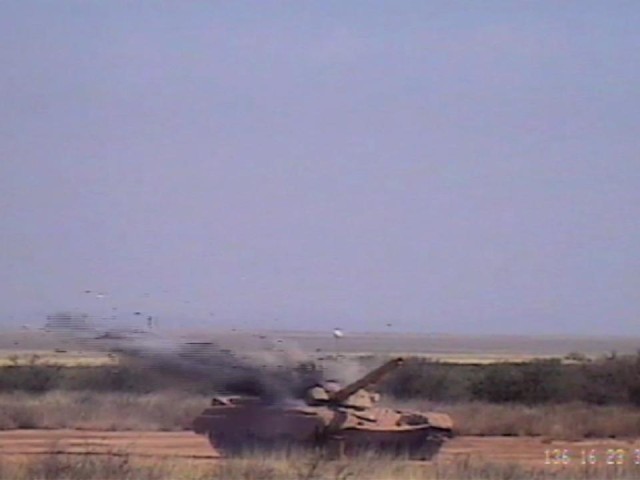The Non-Line of Sight-Launch System provides networked, responsive, platform independent and rapidly deployable precision strike capability against moving and stationary targets, land and sea, for the Army's modular and future force and Navy's Littoral Combat Ship.
It is platform-independent, self-contained and compatible with current and future command and control systems. NLOS-LS comprises the container launch unit and a precision attack missile all-up-round. It is planned for initial fielding to the Infantry Brigade Combat Teams and the Littoral Combat Ships.
The modular Precision Attack Missile is effective against moving and stationary targets. The missile has a 40-kilometer maximum range and uses a GPS/inertial navigation system to guide to the target area. Once in the target area, the missile uses its dual mode uncooled imaging infrared, semiactive laser seeker to acquire and perform terminal guidance on high-value targets. In addition, a GPS/inertial mission can also be executed to deliver the missile's warhead to a requested target position. Following launch, targeting data can be updated and sent to the missile via an onboard radio system. The missile has a boost sustain rocket motor and a fragmentation wrapped, shaped-charge warhead capable of defeating armored targets, soft targets and field fortifications.
The container launch unit consists of the computer and communications system and the base. The base is a four-by-four matrix that provides 16 locations, one for the command and control system and 15 for missile all-up-rounds. The container launch unit is designed to accept other missile variants that enhance NLOS-LS capabilities. The unit is capable of unattended operations without external power. The command and control system communicates with the network via a network radio that provides the mission-specific data needed for threat engagement. Its software provides built-in testing; training; fire mission processing, which allows rapid fire of all 15 missiles at five-second intervals; power management application; GPS location; and system status.
NLOS-LS began Guidance Test Vehicle flight tests in November 2008 and will continue through January 2010. Seven GTV flight tests have been successfully conducted at White Sands missile Range, N.M. Flight tests have demonstrated the launch of missiles from a container launch unit and direct hits against various Army targets (T-72, BMP-2, rocket launchers) at ranges from 4 to 32 kilometers.
To date, the NLOS-LS flight tests have demonstrated target engagement with multiple seeker modes to include; uncooled imaging infrared sensor, semi-active laser designation, SAL anointment in which the SAL and UCIIR cooperatively prosecute the target. Additionally, the flights have demonstrated the inertial and GPS blended navigation capability of the missile. The missile navigation has been conducted in both standard trajectory and an altitude hold flight pattern. The missile's on-board JTRS compatible, Single Channel Radio System radio has been successfully tested during the flight tests. The radio has joined and operated as a node on the net and transmitted terminal images through the radio to the Advanced Field Artillery Tactical Data System during the flight tests.
The most recent flight tests, GTV 9 and GTV 10, were conducted May 16. Both missiles were launched out of the same container launch unit, demonstrating multiple launch capability. The first missile launched against a BMP-2 target and flew three way points to a range of 4 kilometers. All GTV 9 test objectives were met even though the missile missed the target by a few feet. The second missile successfully engaged a T-72 tank equipped with countermeasures at a range of 32 kilometers. Additionally, these tests demonstrated successful interoperability with AFATDS through the complete transmission of terminal images.
Future flight tests will demonstrate moving target engagement, in-flight target updates and additional engagement modes. Navy flight testing will include launching from a motion platform simulating various sea states to confirm launch capability from a sea based platform.
The NLOS-LS Project Office is part of the Program Executive Office for Missiles and Space. NetFires limited liability company, a joint venture between Raytheon and Lockheed-Martin, is the prime contractor. Raytheon Missile Systems, in Tucson, Ariz., is developing the missile; and Lockheed-Martin, in Dallas, is developing the container launch unit.


Social Sharing